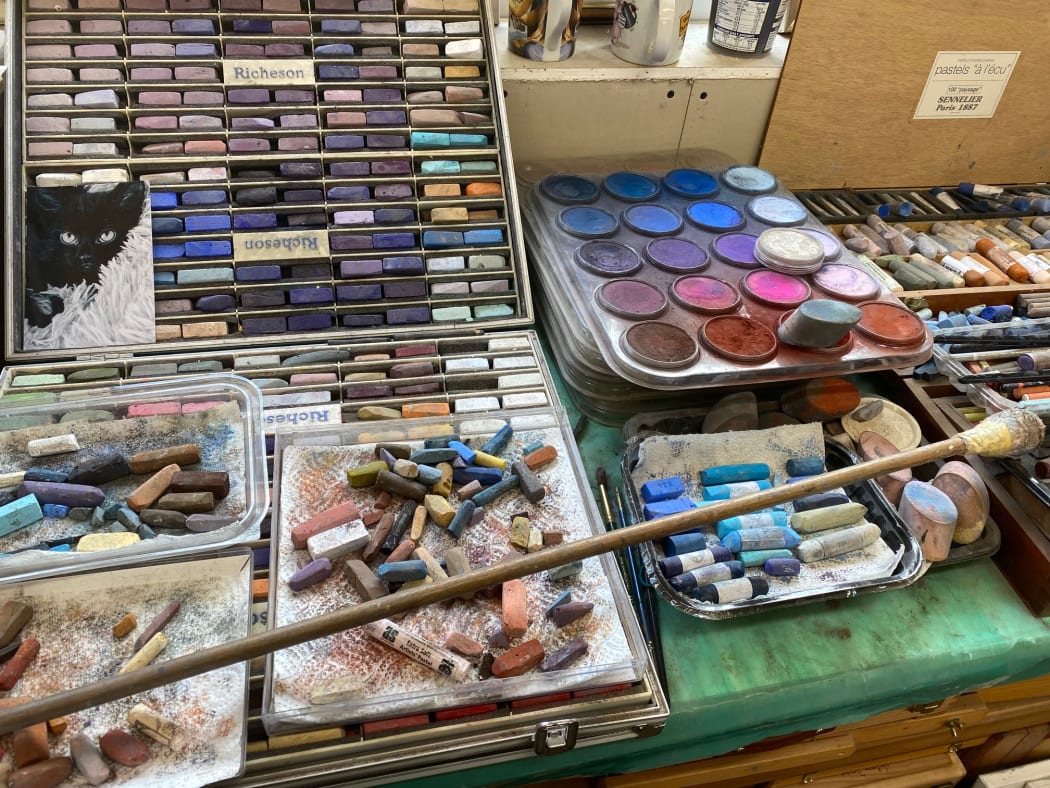
Have you always known that you wanted to become an artist?
Yes since I was a child, I was always drawing and colouring in! I was always top of the class at school, and went on art holidays with school to Castle Toward before applying to art school.
What route did you take to reach that destination?
I entered Glasgow school of Art in 1970 and after graduation, I got married. We moved to London where I did an Art Teacher's Certificate at the University of London's Institute of Education. I then taught in Adult Education before we returned to Scotland and bought a heap of old farm buildings. These became our ambition - Shinafoot Fine Art - from where we ran art courses and painting holidays up until 2020.
Which artists influenced you along the way?
At art school I was interested in Rembrandt, then Whistler, and Turner for portraits in the early days. That was up until I started working more in the landscape, and admired Turner for atmosphere, and the Impressionists for their loose imaginative handling of paint.
What do you love most about being an artist?
Freedom of expression to paint what I want, when I want, and sharing it over many years with my students. But now, I love the freedom of painting for a living and selling!
What's the biggest challenge?
The biggest challenge is selling! Trying to work out what buyers like, are looking for, and getting the balance right without compromising the style and content of what I want to paint.
Tell us about your studio. What do you like about it most? And is there anything you'd like to change?
The studio is next to my house and the best I have ever had. At Shinafoot we purpose-built a studio which was within the house, a perfect design from scratch. But it was built to teach in, so I always had to share it! Since moving to Comrie, and stopping my regular classes, I have a larger studio in the garden which is All mine! I do share with Malcolm, my husband, who does the framing. That makes it more fun, arguing about which frame/which colour etc!!! I would change the roof if I could afford it - it leaks like a sieve after a rain storm!
How would you describe your painting style and technique?
My style aims to be loose and expressive, but does not always work out that way. If it looks too neat and tidy, I throw paint on it and loosen it up. So it always has a good under-structure, but the freedom on top conveys movement, texture etc..
What media do you use and why are they your preference?
I use, and specialise in pastel techniques using the medium with gouache, water and anything else to give the texture I want. I have developed techniques in dry pastel which are modern and exceptional. I've written many books and magazine articles on different techniques, as well as being invited to teach internationally to share my process and experience.
Where do you get your inspiration?
From my surroundings. In the early days I loved portraiture when my children were growing up (I still do when my granddaughter is around!). Then I switched to landscape when I returned to Scotland. As the international invitations came to teach overseas, I always felt inspired by the new surroundings, and loved the challenge of tackling new and unknown locations. From all over the USA, India, Australia and plenty of European destinations, I have been blessed to feel inspiration from all these beautiful locations AND get to live in Scotland's finest highlands!!
Do you know what you're going to paint before you face a blank canvas?
Yes! My intentions are always pre-planned, usually working from my library of painting diaries from my travels, or recent photographs I take when in a hurry! My paintings always comprise of a mishmash of photos, never copying from just one, so there's usually quick sketches to work out my strategy.
What is the starting point for your paintings?
Sometimes, if it is likely to be a complicated subject, I will roughly sketch in with a brush to divide the painting into the proportions of the subject… But very often I just throw on a broad underpainting of colours which inspire the subject and gradually work the shapes on top with lots of underpainting showing through. Sometimes I even paint on top of another painting, using some of these colours to add a splash of interest to the new topic.
How do you know when a painting is finished?
When you don't know what to do next, do nothing! I usually have a painting propped up on the easel overnight and see it with a fresh eye the next day - if nothing jars with me, then it IS finished!

